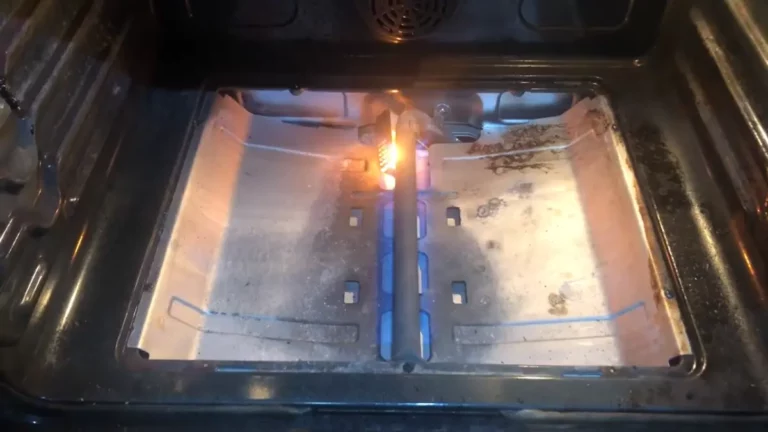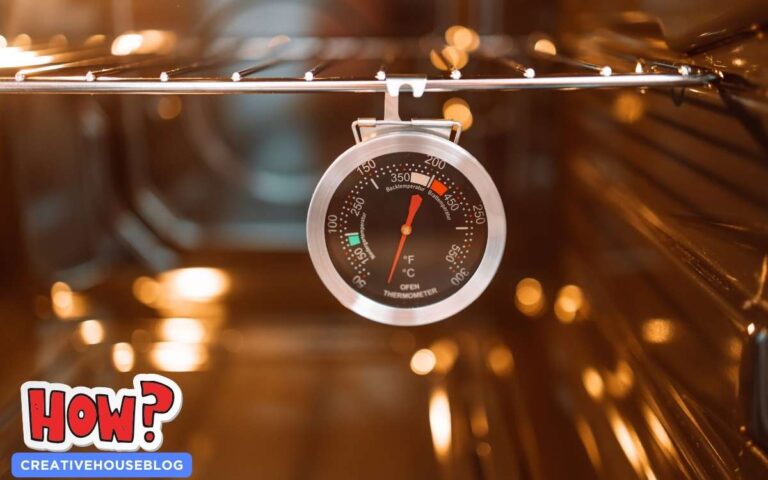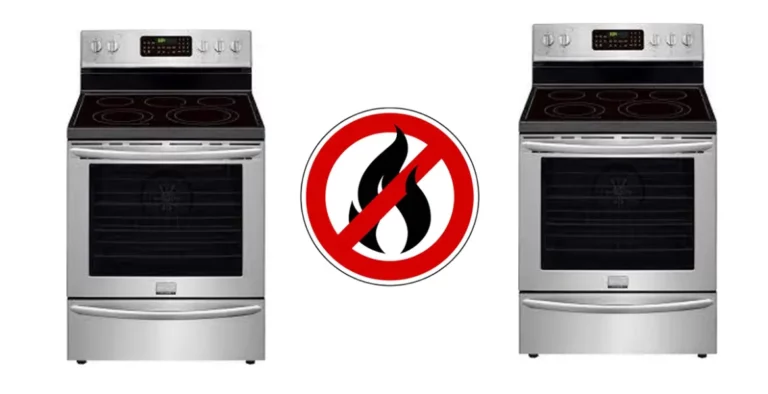Each Samsung oven model has something for everyone, from innovative Self-cleaning technology to Energy-saving or Wi-Fi connectivity features. But regardless of the Samsung oven model that you own, you may face one of the following temperature issues:
To resolve the specific temperature issue that you might be experiencing, keep reading this detailed guide which is specially dedicated to troubleshooting Samsung Electric and gas oven models!
Key Takeaway
Problem_1: Samsung Oven Fails to Cook the Food Well!
By default, the Auto Conversation mode is enabled on all Samsung models, which is ideal for regular cooking.
However, convection cooking is more specific than regular cooking and the oven temperature will be reduced by 25°F for any added temperature during convection cooking.
Besides the standard rate of temperature reduction when switching between oven modes, if you notice that the food is not cooking well, you may try the below fixes:
How to Fix:
Use the correct cookware and rack positioning:
Before starting, go through the specific user manual provided for your particular oven model. Follow the exact recommended rack positioning and only use recommended cookware.
Ensure proper airflow:
If you’re using the correct type of cookware and the right rack positioning, it could be the insufficient airflow that causing the issue (especially, if you’re performing convection cooking).
- Confirm that you have a minimum 1-inch gap around each food item so that the airflow can reach each side of the food item and heat it properly.
- Also, do not use aluminum foil inside the oven since it can block the airflow or even damage your oven by melting inside the oven.
Refrain from opening the oven door while cooking the food:
It is because every time you open that door to check on the food, it also emits the generated hot airflow. As a result, each time you do that, the oven starts to reheat again, which delays the oven reaching the right heating temp.
Re-Calibrate your oven:
- Choose a test recipe that you are well-versed in, such as making 3 to 6 cookies or something simpler like that. You may need to cook this item multiple times to get your desired quantity of calibration.
- Set the calibration value to “0” if the oven has been calibrated before. Now cook the selected recipe by following exact written instructions.
- Keep trying until the food comes out perfectly cooked. Take note of the temperature you set when you receive the desired results and compare it to the original recipe temperature.
- Once you’ve determined the actual value of calibration, set the temperature setting by pressing and holding the “Broil” and “1” buttons until you see “ADJ 0” on the oven’s display. Or follow the exact instructions provided in your model’s user manual. Confirm and save the new setting.
Request a professional service:
If the problem remains after re-calibration, visit the Samsung Support Center to request service.
Problem_2: The Samsung Oven Seems to Be Stuck and Not Heating!
In every Samsung model, the display will show 150°F (by default) whenever you click the “Start” button to preheat. This temperature will rise as the oven heats up and will keep rising until it reaches the target temperature.
But if you notice that the temperature seems to be stuck at 150°F for too long than usual, try the following steps:
How to Fix:
- Make sure that you have shut the oven door properly.
- Verify that your oven is not in “Demo” mode.
To confirm that check if the oven display is showing “tESt,” “tE 5t,” or a “d/D” icon. If it is a Samsung wall oven with an LCD screen, you will see “DEMO” at the top of the display.
- Follow the instructions provided in your model’s user manual to disable the “Demo” mode.
- Shut the main circuit breaker off and wait at least 30 seconds before turning the power back on. If the oven still seems stuck, contact the Samsung Service Centre.
Problem_3: Samsung Oven Takes Too Long to Reach the Set Temperature!
If you notice that your oven is taking too much time to reach the set temperature, try the below steps to fix the problem:
How to Fix:
- First, shut off the main circuit breaker and turn it back on after 30 seconds. Then check the oven’s condition again.
- Keep your oven at room temperature and empty the oven. Just leave a single rack inside the oven.
- Set the oven temperature to 350°F for preheating and wait until you hear the beep. (mostly it takes a maximum of 20 minutes). Make sure not to open the door during this time.
- Now, measure the exact time your oven takes to finish the preheating. (Do not use any thermometer for the measurement).
- Use a digital multimeter to check the voltage range of your oven and if the reading shows a result below 240 volts, the oven will need professional servicing.
Problem_4: Samsung Oven Temperature May Not Match with Thermometer!
If the temperature does not match with the Thermometer result, it could be due to:
- The thermometer’s materials influence its speed and accuracy in measuring temperature:
Even though they are labeled as standard oven thermometers, some would get there quickly, and some would take longer depending on their composed materials and measuring mechanism.
Also, these devices (thermometers) are not highly accurate or calibrated. Thus, they can’t provide accurate measurements when the oven temperature quickly changes or randomly fluctuates.
- The random fluctuation of the oven cycle might be confusing the thermometer:
The oven cycle randomly goes on and off while you are using it. This also causes the temperature to fluctuate and it’s completely normal because ovens are designed like that.
However, the thermometers are typically slow to adjust to quick cycling differences and as a result, it may take longer to reach the correct reading.
How To Fix:
If you really want to measure the oven temperature and get a specific number, use a Thermocouple to get an accurate measurement. For any further help, visit Samsung Customer Service.
Problem_5: Samsung Oven Temperature Won’t Heat Past a Certain Level!
If your Samsung oven is taking too long like almost an hour to reach 350°F and cannot heat past 375°F or more than that, it could be due to:
- A calibration issue where the oven temperature sensor may have fallen out of range, or
- A defective gas valve.
How to Fix:
If the unit is igniting and heating, but the oven heating temperature seems not accurate or going past a certain level, check if the temperature sensor has fallen out of range as suspected and replace it immediately.
The following tutorial will help you to diagnose and replace the temp sensor on your Samsung model:
If you are still experiencing the same issue and can hear gurgling noises coming from the flame as the oven starts to heat the flames, it is most likely because of the defective gas valve that needs to be replaced.
Frequently Asked Questions:
Why isn’t my Samsung oven reaching the correct temperature?
It could be due to broken/damaged heating element(s), malfunctioning temperature sensor, lack of proper airflow inside the oven, or maybe the oven door hasn’t been closed properly.
What’s the first thing I should check if my Samsung oven isn’t heating properly?
The first thing you should check is whether the power supply or the gas supply (for gas ovens) to your oven is turned on.
How long should my Samsung oven take to get to 375°F?
This may slightly vary from model to model, but generally, it takes 15 to 20 minutes max for a Samsung oven to reach 375°F.
Why does my Samsung oven take so long to heat up?
It could be due to a broken or damaged seal on your oven door that prevents the door from closing properly.






